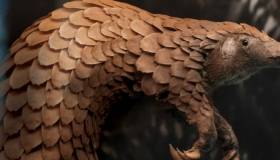
March 6, 2018 – Growing up in the high mountains of the Andes, llamas and alpacas didn’t have to worry too much about getting enough vitamin D – ample sunshine at high altitudes ensured they got what they needed. But when the animals made their way to the United States, their new home meant new health problems and a veterinary community that found itself dealing with animals of a different sort.
Dr. Patrick Long saw firsthand how the explosion of raising and breeding llamas and alpacas posed a huge problem for veterinarians; they didn’t have the information they needed to care and treat for these (at the time) exotic animals. While they did their best to extrapolate what they knew from horses, cows, and sheep health, they quickly learned that, well, llamas and alpacas are not just shaggy sheep – they are very different biological beasts!
“Back in late ‘80s early ‘90s, there was a lot enthusiasm in the industry,” said Dr. Long, a longtime board member of Morris Animal Foundation. “Animals sold for a lot of money and there was a lot of money for research. Unfortunately, 2008 was very hard on the industry and it really hasn’t recovered. Research money has since dried up. Morris Animal Foundation remains one of the few organizations that continues to support health research in llamas and alpacas.”
Morris Animal Foundation has a long history of working with the llama and alpaca community. Dr. Long, with his camelid expertise, provides the Foundation with valuable insight on current health issues in alpacas and llamas and the need for continued research.
As Dr. Long saw more and more llamas and alpacas in his practice, he became concerned about a serious health problem that was affecting his youngest patients, called cria (baby llamas and alpacas).
“I was starting to see more and more cria with crooked limbs and having difficulty walking. To me, these symptoms looked like a rickets-type disorder,” said Dr. Long.
Rickets is a disease well-known to pediatricians but is seldom seen in animals. Softening and weakening of bones occurs secondary to extreme and prolonged vitamin D deficiency.
Dr. Long’s first response was to take blood samples for analysis. Results quickly confirmed that these animals had low vitamin D. Although Dr. Long found the cause of the problem, he now had to figure out the proper dose of vitamin D needed to correct the problem without causing toxicity. Dr. Long reached out to his friend, Dr. Robert Van Saun, working at time at the University of Oregon.
“When I talked to Dr. Van Saun, he didn’t just want to help me solve my vitamin D dosing problem, he wanted to know why this was happening in the first place. My simple question apparently sparked Dr. Van Saun to embark on several years of vitamin D research that Morris Animal Foundation was instrumental in funding,” said Dr. Long.
Dr. Van Saun confirmed that vitamin D deficiency induced rickets in young llamas and that seasonal influences were at play. He determined the appropriate rate of vitamin D supplementation to maintain normal calcium and phosphorus balance and support normal growth during these seasonal periods, first for llamas and then alpacas.
Other research funded by the Foundation includes drug studies and improving diagnostics and management of many diseases specific to llamas and alpacas living in North America. Today, the Foundation is looking long-term and globally focusing on the development of a robust alpaca genome to help us learn more about the genetic causes of diseases in these animals.
Llama and alpaca health research is not supported by governmental agencies as they are not food production animals. It is up to privately funded foundations, like Morris Animal Foundation, with the support of our partners -- the Alpaca Research Foundation, the Greater Appalachian Llama Association North West Camelid Foundation, Llama Association of North America, and other camelid-loving donors – to make sure these animals are healthy and thriving.




